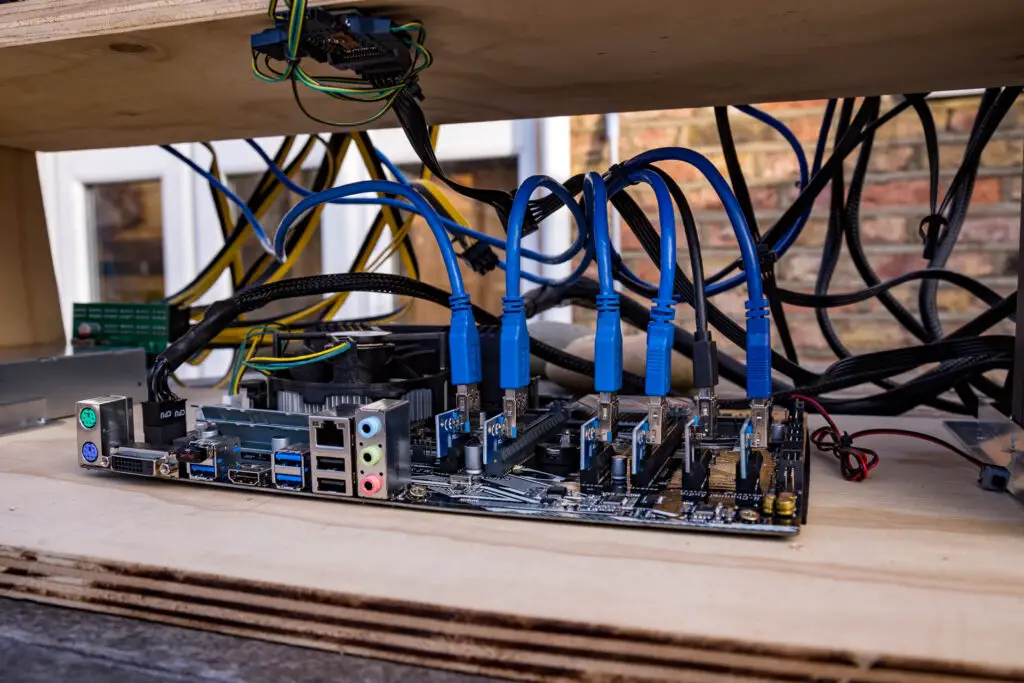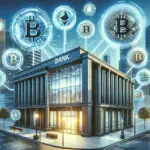Cryptocurrency mining has evolved from a hobbyist activity into a potentially profitable venture. If you’re interested in constructing your own cryptocurrency mining rig, you’re embarking on a project that combines technical skills with an adventure into the world of digital currencies. This article will guide you through the process of building a DIY crypto mining rig, from selecting the right components to assembling the hardware and optimizing your setup.
Understanding Crypto Mining
Crypto mining is the process by which new coins are entered into circulation, but it’s also a critical component of the maintenance and development of the blockchain ledger. Mining is performed using sophisticated hardware that solves an extremely complex computational math problem. The first computer to find the solution to the problem receives the next block of coins, and the process repeats itself.
Components of a Mining Rig
To build a mining rig, you will need several key components:
Motherboard: This is the heart of your rig. You need a motherboard that can support multiple graphics cards (GPUs), typically requiring more PCI slots.
CPUs: While the CPU is less critical in crypto mining, it is still needed to run the software and support the GPUs.
Graphics Cards (GPUs): These are the most critical components of your mining rig. High-end GPUs like NVIDIA RTX or AMD Radeon series are popular choices.
Power Supply Unit (PSU): Mining consumes a lot of power, so a strong PSU is essential. Ensure it has enough capacity to support your GPUs.
RAM: At least 8GB of RAM is recommended for smooth operation.
Storage: A basic SSD or even a USB stick can serve as the storage for your mining OS and software.
Cooling System: Mining generates considerable heat, so adequate cooling (fans or even liquid cooling systems) is crucial.
Frame: While you can use a traditional PC case, open-air frames are preferred for better cooling and easier access to components.
Step-by-Step Guide to Building Your Rig
Planning: Start by deciding how many GPUs you want to use, which will determine the other components due to compatibility and power requirements.
Install the CPU on the motherboard, along with the RAM.
Attach the PSU and connect it to the motherboard and GPUs.
Secure the GPUs in the frame and connect them to the motherboard via PCI risers.
Set up the cooling system to ensure adequate air flow.
Software Installation:
Choose a mining OS (like HiveOS or RaveOS) that can be booted from a USB stick.
Install mining software compatible with your chosen cryptocurrency.
Configure your miners by connecting them to a mining pool and setting up your wallet address.
Optimizing Your Setup
After assembling your rig, the next step is optimization. Here are a few tips:
Update Firmware: Keep your GPU firmware up to date to ensure they are running efficiently.
Tweak Settings: Adjust the GPU settings for optimal mining performance. Overclocking can increase output but also raises power consumption and heat.
Monitor Performance: Use mining software with monitoring features to keep track of your rig’s efficiency and profitability.
Risks and Considerations
Before diving into mining, consider the following:
Electricity Costs: Mining is power-intensive, and high electricity costs can outweigh the profits from mining.
Market Volatility: The value of cryptocurrencies can fluctuate wildly.
Regulatory Environment: Be aware of local regulations regarding cryptocurrency mining.
Building a DIY crypto mining rig can be a rewarding project, offering both an educational experience and the potential for profit. With the right approach and ongoing management, your mining rig can effectively mine crypto coins, helping you step into the world of cryptocurrencies.
Maintenance and Security of Your Mining Rig
Once your mining rig is up and running, maintaining its health and optimizing its performance become key ongoing tasks.
Regular Maintenance
Cleaning: Mining rigs collect dust, which can hinder performance and increase heat. Regularly clean your rig, focusing on fans and other cooling components.
Software Updates: Regularly update your mining and operating system software to protect against vulnerabilities and improve performance.
Hardware Checks: Periodically check all connections and components for wear and tear or potential failures. This includes checking the status of GPUs, risers, and cables.
Secure Your Wallet: Use a secure and reliable crypto wallet. Consider hardware wallets for enhanced security.
Network Security: Ensure your internet connection is secure. Use a VPN and enable firewall settings to protect against potential attacks.
Backup Important Data: Regularly back up your wallet keys and any important configuration settings.
Cost-Effectiveness Analysis
To determine whether your mining operation is cost-effective, you need to calculate your ongoing expenses against your mining profits. Key factors include:
Electricity Costs: This is typically the largest ongoing expense. Use a power meter to monitor your rig’s electricity consumption.
Hardware Depreciation: Crypto mining can wear out components, especially GPUs, faster than normal usage.
Cryptocurrency Values: Keep track of market prices as the profitability of mining can change rapidly with price fluctuations.
Tools and Calculators
There are several online calculators that can help you assess the profitability of your mining setup by considering factors like hash rate, power consumption, electricity cost, and the current crypto market.
Scaling Your Mining Operation
If you find success with your initial mining rig, you might consider scaling your operation. This could involve:
Adding More GPUs: More GPUs can increase your mining capability but will also require additional power and cooling.
Upgrading Components: As technology advances, newer GPUs and other components can offer more power-efficient mining.
Joining Larger Pools: Larger mining pools can offer more regular, albeit smaller, payouts.
Legal and Environmental Considerations
Regulatory Compliance: Ensure that you are in compliance with local laws regarding cryptocurrency mining. This can include regulations related to taxes, energy use, and noise levels.
Environmental Impact: Crypto mining has a significant energy footprint. Consider using renewable energy sources to power your rig, or participate in carbon offset programs to mitigate the environmental impact.
Building and operating a DIY crypto mining rig requires an initial investment in hardware and time, but it can be both a profitable and educational endeavor. By maintaining your rig, securing your setup, and staying informed about cryptocurrency trends and regulations, you can optimize your mining operations for long-term success. Whether you’re a hobbyist looking to explore the world of cryptocurrencies or an entrepreneur aiming to scale up, the journey of crypto mining is filled with opportunities and challenges.







